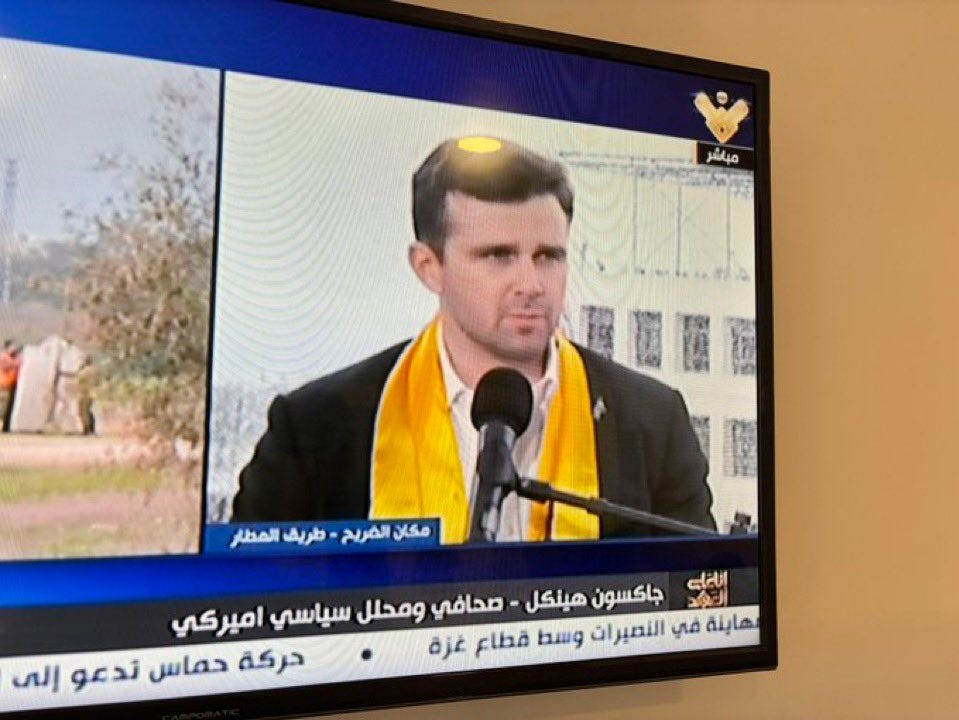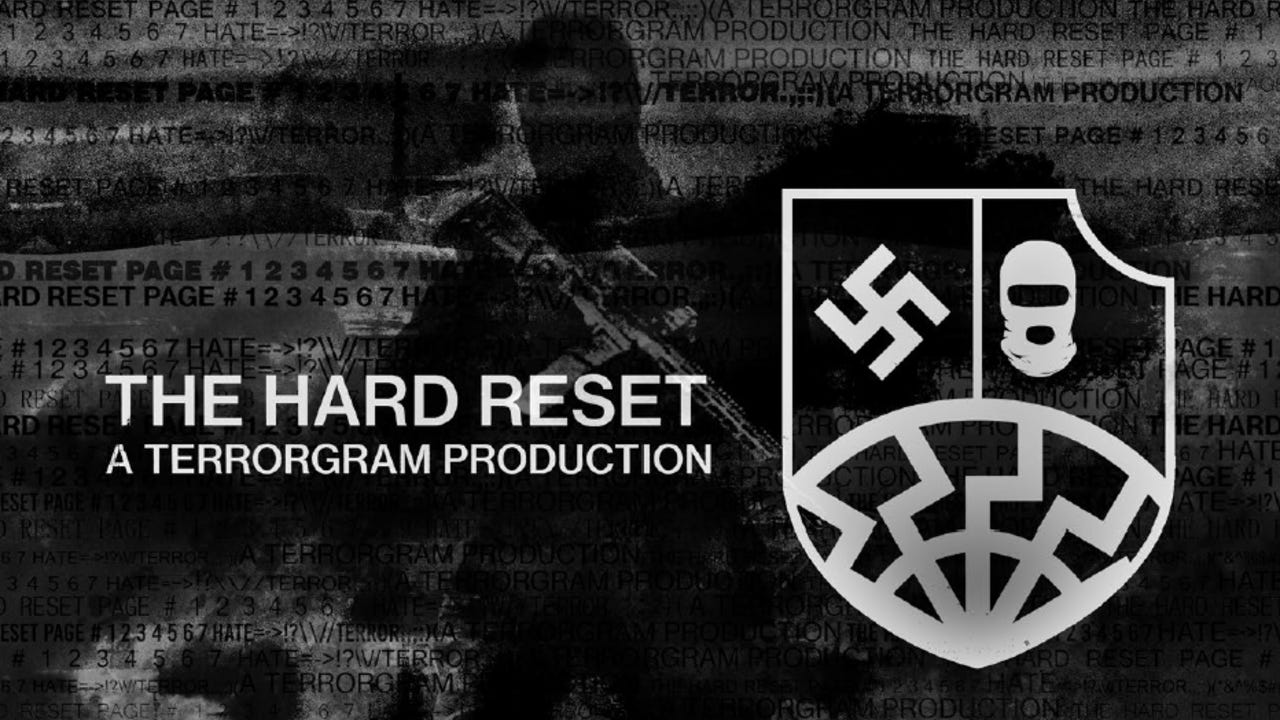Mapping U.S.-Designated Terrorist Media Outlets and Their Influence
U.S. influencer Jackson Hinkle’s recent interview on Al-Manar TV, Hezbollah’s terror-designated media outlet, highlights the strategic role of terrorist media in propaganda and influence ops
The influence of terrorist organizations is not limited to their armed wings or political branches. In the modern landscape of asymmetric warfare, media plays a critical role in shaping narratives, recruiting supporters, and disseminating propaganda. Recently, American influencer Jackson Hinkle gave an interview on Al-Manar—Hezbollah’s official TV station and a U.S.-designated terrorist entity. Furthermore, the U.S.-based Palestine Chronicle was allegedly found to have provided a platform to a Hamas operative involved in holding an Israeli hostage captive. These events have highlighted the significance of media platforms linked to extremist groups.
1. Al-Manar: Hezbollah’s Global Propaganda Machine
Founded in 1991, Al-Manar operates as Hezbollah's primary media platform, designed to advance the group’s militant ideology and anti-Western narratives. In March 2006, the U.S. Department of the Treasury designated Al-Manar, along with its sister station al Nour and parent company Lebanese Media Group, as Specially Designated Global Terrorist entities under Executive Order 13224 (U.S. Treasury - Al-Manar Designation).
The network functions as an operational tool for Hezbollah’s broader agenda. It has employed Hezbollah operatives, including at least one individual who used his role at Al-Manar to conduct pre-operational surveillance for terrorist activities. Al-Manar has also facilitated fundraising for Hezbollah by broadcasting donation appeals and airing commercials for Hezbollah-affiliated charities, providing direct bank account information for contributions. In 2005, Hezbollah Secretary General Hassan Nasrallah used Al-Manar to publicly call for Lebanese citizens to volunteer for military training.
Al-Manar has further extended its support to other U.S.-designated terrorist organizations, including the Palestinian Islamic Jihad (PIJ) and the al-Aqsa Martyrs Brigade, helping funnel tens of thousands of dollars to PIJ-controlled charities. Overseen by Hezbollah’s Executive Council and directly managed by Nasrallah, the network is deeply embedded in the group’s operational structure.
Initially placed on the Terrorism Exclusion List (TEL) in 2004, Al-Manar’s designation was expanded in 2006, leading to asset freezes and a prohibition on U.S. financial transactions with the network. Despite these sanctions, Al-Manar continues to broadcast across the Middle East and parts of Europe, amplifying Hezbollah’s messaging and promoting extremist narratives.

2. Islamic Revolutionary Guard Corps (IRGC) Media Operations
The Islamic Revolutionary Guard Corps (IRGC), designated as a Foreign Terrorist Organization by the U.S. in 2019, oversees a vast network of media outlets used to promote Iranian state propaganda and spread disinformation. These operations range from traditional television channels to sophisticated cyber influence campaigns.
A key component of Iran’s disinformation strategy is the Cognitive Design Production Center, sanctioned by the U.S. in 2024 for its role in election interference and coordinated social media manipulation. These efforts are designed to foster political instability in Western democracies while promoting Iran’s geopolitical narratives.
3. Al-Aqsa TV: Hamas’ Media Weapon
Al-Aqsa TV, Hamas’ official television network, has been a central pillar of the group’s propaganda machine. Designated as a Specially Designated Global Terrorist entity in 2010, Al-Aqsal-aa TV has consistently promoted antisemitic narratives, glorified acts of violence, and disseminated Hamas’ militant ideology. In 2019, Israel’s domestic security service, the Shin Bet, reported that Al-Aqsa TV was used by Hamas’ military wing to recruit young Palestinians with Israeli ID cards to carry out terror attacks inside Israel. Through its programming, Al-Aqsa TV has targeted both local and international audiences, shaping public opinion in Gaza while spreading Hamas’ messaging across the region.

4. The Palestine Chronicle
The Palestine Chronicle, run by the U.S.-based People Media Project, is facing a federal lawsuit alleging it provided material support to Hamas by publishing articles from Abdallah Aljamal, a Hamas operative who held three Israeli hostages—Almog Meir Jan, Andrey Kozlov, and Shlomi Ziv—in Gaza. During their captivity, Aljamal told the hostages that Hamas was coordinating with “allies” on U.S. college campuses and in the media to spread anti-Israel narratives, according to the lawsuit. Despite Aljamal’s known ties to Hamas—having served as a spokesperson for its labor ministry—the Palestine Chronicle continued to publish his work, including while he was allegedly holding the hostages. The lawsuit argues that the Chronicle’s tax-exempt status allowed U.S. taxpayers to inadvertently fund Hamas propaganda.
An important thread from X user Leslie Kajomovitz revealed how, after the hostages were rescued, the Palestine Chronicle downplayed Abdallah Aljamal’s role by changing his title from "correspondent" to "contributor" and eulogizing him as a "well-known journalist" while denying his involvement in holding hostages.
5. Terrorgram
Operating across encrypted platforms, Terrorgram amplifies neo-fascist, white supremacist, and accelerationist ideologies, often providing guides, manifestos, and propaganda aimed at inciting lone-wolf attacks.
In January 2025, the U.S. designated Terrorgram as a terrorist entity, recognizing its role in radicalizing individuals and promoting domestic terrorism. Its decentralized, anonymous structure complicates law enforcement efforts, illustrating how extremist networks adapt to evade regulatory scrutiny.

The Media Battlefield in Modern Extremism
The examples of Al-Manar, Terrorgram, IRGC-affiliated media outlets, Al-Aqsa TV, and the Palestine Chronicle illustrate the central role media plays in extremist operations. In addition to being propaganda arms, these outlets serve as operational tools for recruitment, fundraising, and disinformation campaigns. Understanding the functions and risks associated with these media outlets is essential for developing effective counterterrorism policies and safeguarding public discourse.



